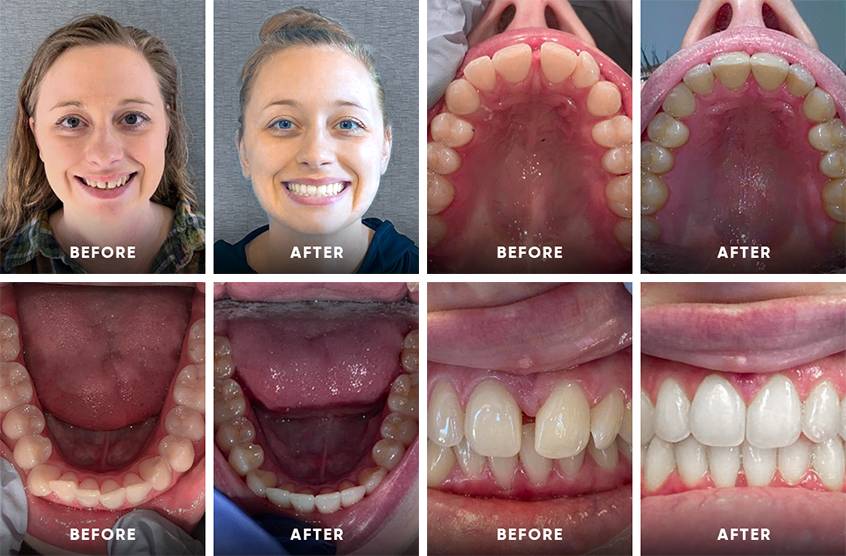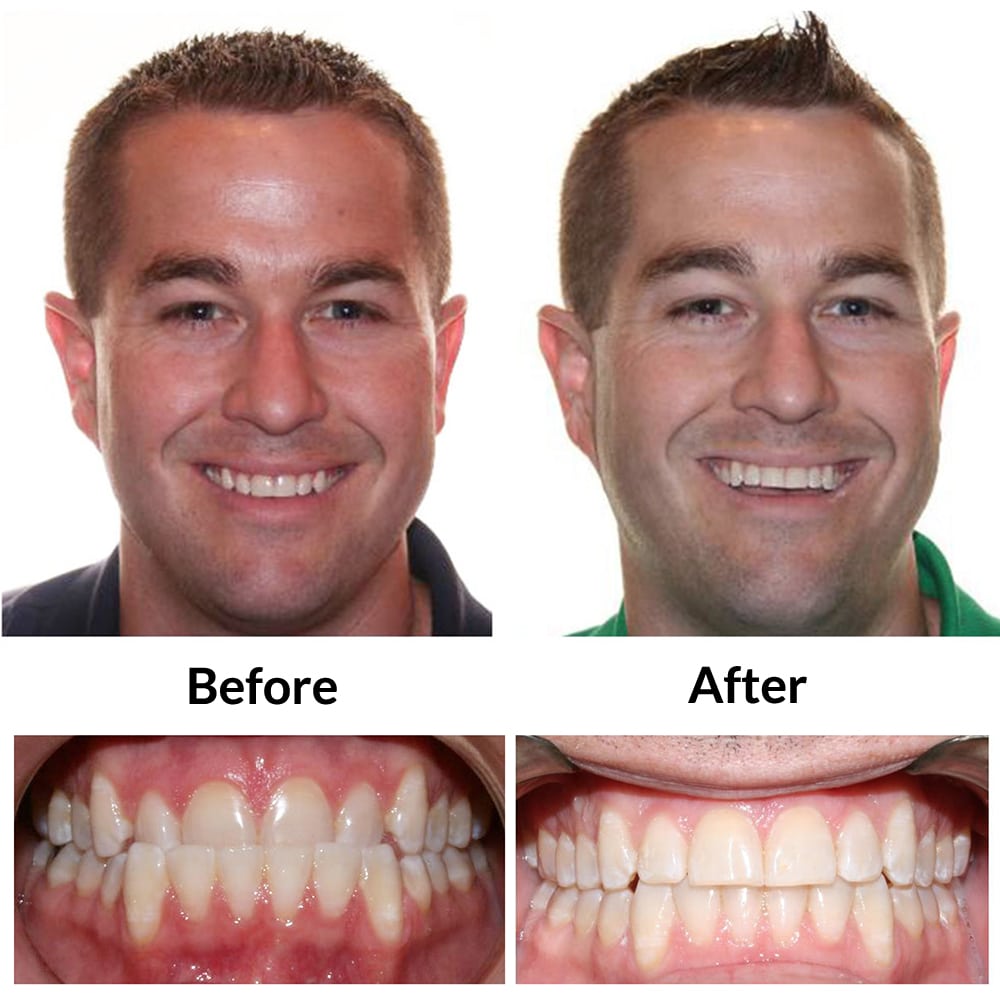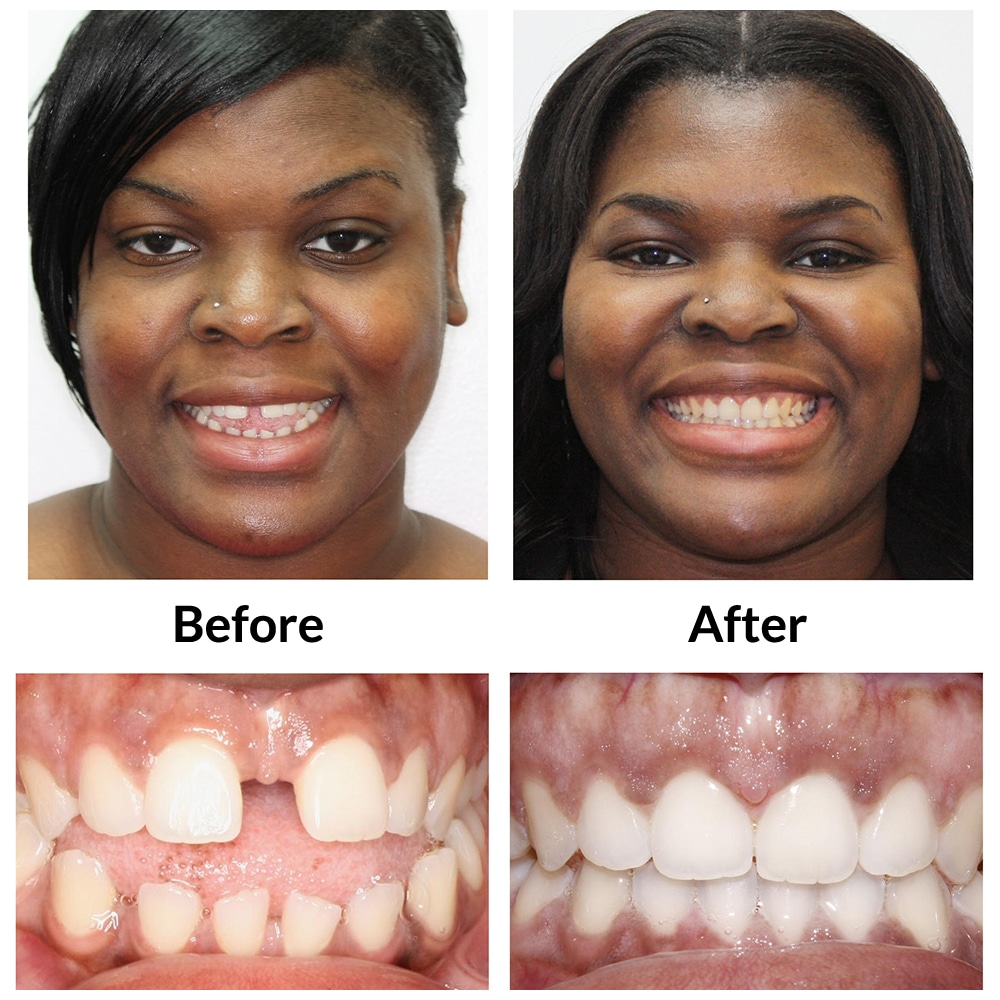The Expense of Invisalign: Understanding the Investment in Your Smile
The Expense of Invisalign: Understanding the Investment in Your Smile
Blog Article
Invisalign vs. Standard Dental braces: Which Option Is Right for You?
When considering orthodontic treatment, the option in between Invisalign and conventional dental braces provides a number of essential aspects that merit cautious analysis. Invisalign supplies a discreet choice with removable aligners, while typical dental braces provide a more noticeable yet reliable solution for extreme imbalance.
Review of Therapy Alternatives

On the other hand, conventional dental braces consist of metal brackets and cables that are bound to the teeth. This method applies continuous pressure with time to achieve alignment. While efficient for complex orthodontic problems, standard braces call for routine check outs for adjustments and can posture challenges in preserving dental hygiene due to the problem of cleaning up around cables and brackets.
Both options have their values, and the option commonly depends upon particular dental conditions, way of life choices, and individual compliance. Eventually, consulting an orthodontic expert is critical for establishing one of the most ideal treatment plan customized to private requirements. Understanding the subtleties of each alternative can substantially affect the general success of orthodontic therapy.
Visual Considerations
A significant variable affecting the option between Invisalign and traditional dental braces is the visual charm each treatment supplies. Invisalign aligners are crafted from clear plastic, making them practically unseen when worn. This discreet appearance is particularly attracting grownups and teenagers who may really feel uneasy concerning their orthodontic therapy. The capability to keep a natural smile throughout the positioning procedure can substantially boost the patient's self-confidence in social and professional settings.
On the other hand, standard dental braces are composed of steel braces and wires, which can be much more recognizable. While advancements in orthodontic innovation have actually resulted in the development of smaller brackets and colored elastics, typical braces still preserve an even more noticeable account. For some people, the exposure of braces may deter them from looking for required treatment.
Inevitably, the option between Invisalign and standard braces might rest on personal choices regarding appearances. People who prioritize discernment frequently favor Invisalign, while those that are less concerned concerning visibility might choose for conventional braces. Comprehending the aesthetic effects of each choice is important for making an educated choice that lines up with one's way of living and preferences.
Convenience and Convenience

In regards to comfort, Invisalign aligners are detachable, enabling people to appreciate their favored foods without constraint and preserve optimal dental health. Brushing and flossing are simplified, as the aligners can be have a peek at this site obtained throughout these routines, whereas standard braces need careful navigating around brackets and cords.
In addition, Invisalign's modern system enables fewer orthodontic check outs. Individuals typically get several collections of aligners at the same time, which can simplify the treatment process and lower time spent in the orthodontist's chair. In comparison, conventional dental braces necessitate routine changes, making them less hassle-free for those with busy routines. Invisalign. On the whole, the comfort and benefit of Invisalign make it an enticing option for lots of people seeking orthodontic therapy.
Therapy Duration and Effectiveness
While both Invisalign and standard dental braces are efficient in dealing with dental imbalances, the period of treatment can vary considerably between both options. Typically, Invisalign therapy can take anywhere from 12 to 18 months, depending upon the complexity of the situation. The clear aligners work by gradually changing teeth into their preferred positions, and normal follow-ups with an orthodontist help make certain progress continues to be on track.
On the other hand, conventional braces often call for a longer dedication, usually varying from 18 months to three years. This is due to their fixed nature and making use of braces and wires, which can be extra effective for complicated cases and severe misalignments (Invisalign). The treatment efficiency of traditional braces is well-documented, as they enable for precise adjustments and better control over tooth movement
Ultimately, the choice in between Invisalign and standard dental braces might rest on both the anticipated treatment period and the details dental problems available. Consulting with an orthodontist is important, as they can supply customized recommendations based on individual needs, making sure the selected method straightens with preferred timeframes and end results.
Expense Comparison and Insurance Coverage Choices
Expense plays a considerable role in the decision-making procedure for people taking into consideration orthodontic therapy, whether opting my blog for Invisalign or traditional dental braces. Usually, the price of Invisalign varieties from $3,000 to $8,000, while standard dental braces generally set you back between $2,000 and $6,000. Elements affecting these prices consist of the complexity of the instance, the duration of treatment, and geographical place.
Insurance coverage can substantially affect out-of-pocket costs. Numerous oral insurance plans give partial protection for orthodontic therapies, yet the specifics can vary commonly. It is critical for clients to review their insurance coverage to establish the degree of coverage for either choice. Typically, typical dental braces might be a lot more regularly covered by insurance strategies compared to Invisalign, which some insurance companies categorize as a cosmetic procedure.
Furthermore, several orthodontic practices provide versatile payment plans, making both treatment alternatives extra easily accessible. People ought to ask about potential funding choices and price cuts for ahead of time payments. Evaluating the overall price, including insurance coverage advantages and layaway plan, is essential for making a notified decision that straightens with both visual preferences and budget plan considerations.

Conclusion
In recap, the selection get more in between Invisalign and traditional braces depends upon numerous elements, including visual choices, comfort, treatment duration, and expense. Invisalign offers a discreet, detachable option that helps with oral hygiene and dietary adaptability, while traditional braces may be better for complex oral concerns and frequently come with a reduced cost factor. Inevitably, consultation with an orthodontist is important to evaluate private scenarios and establish one of the most proper treatment choice for achieving optimal oral placement.
When thinking about orthodontic therapy, the option between Invisalign and traditional braces provides a number of crucial elements that warrant cautious evaluation.Contrasting Invisalign and traditional braces reveals distinctive therapy alternatives for orthodontic improvement.While both Invisalign and standard braces are effective in dealing with dental misalignments, the duration of treatment can differ substantially in between the 2 options.Expense plays a significant function in the decision-making procedure for people considering orthodontic therapy, whether deciding for Invisalign or typical braces.In recap, the choice in between Invisalign and traditional dental braces pivots on multiple aspects, consisting of visual preferences, convenience, treatment duration, and expense.
Report this page